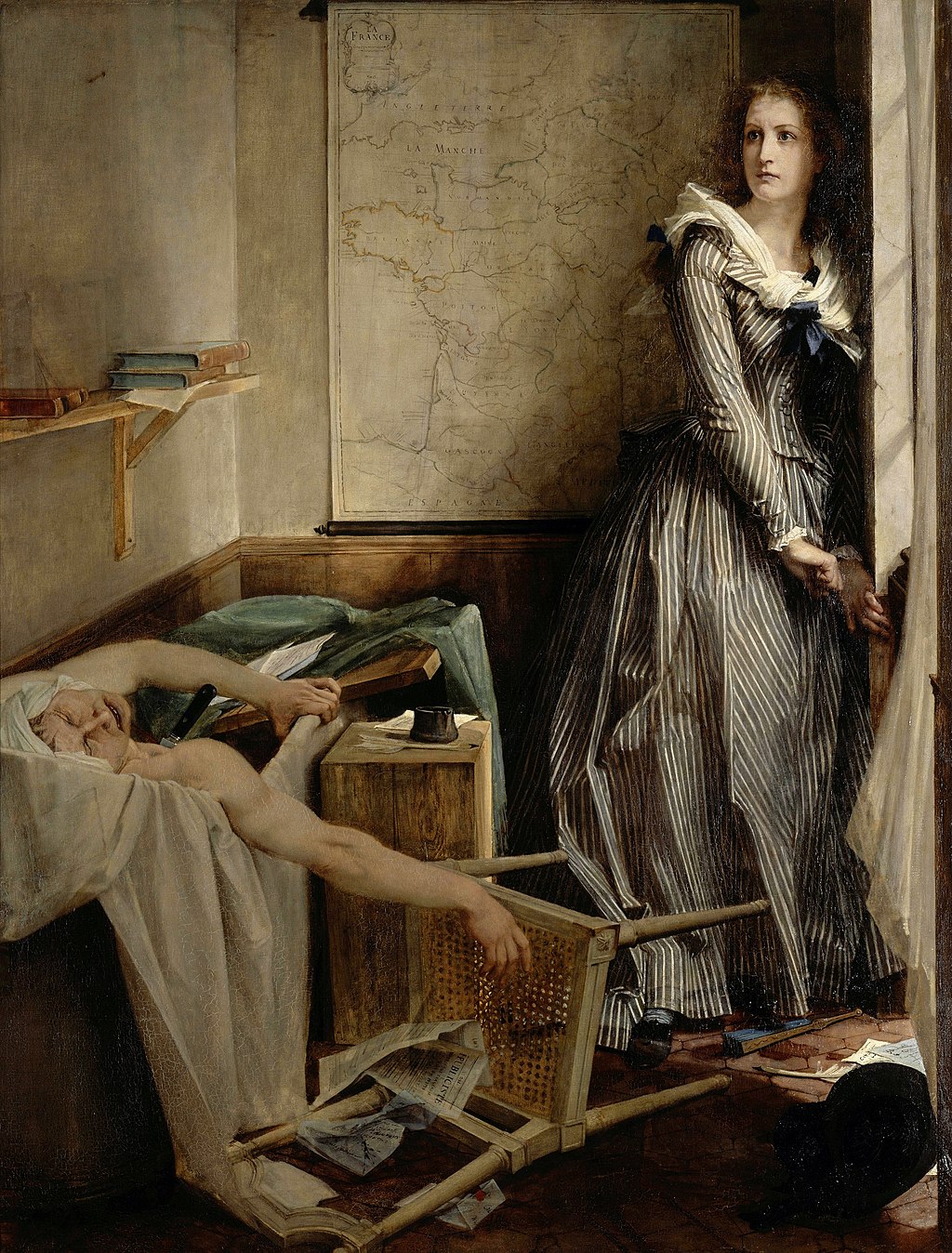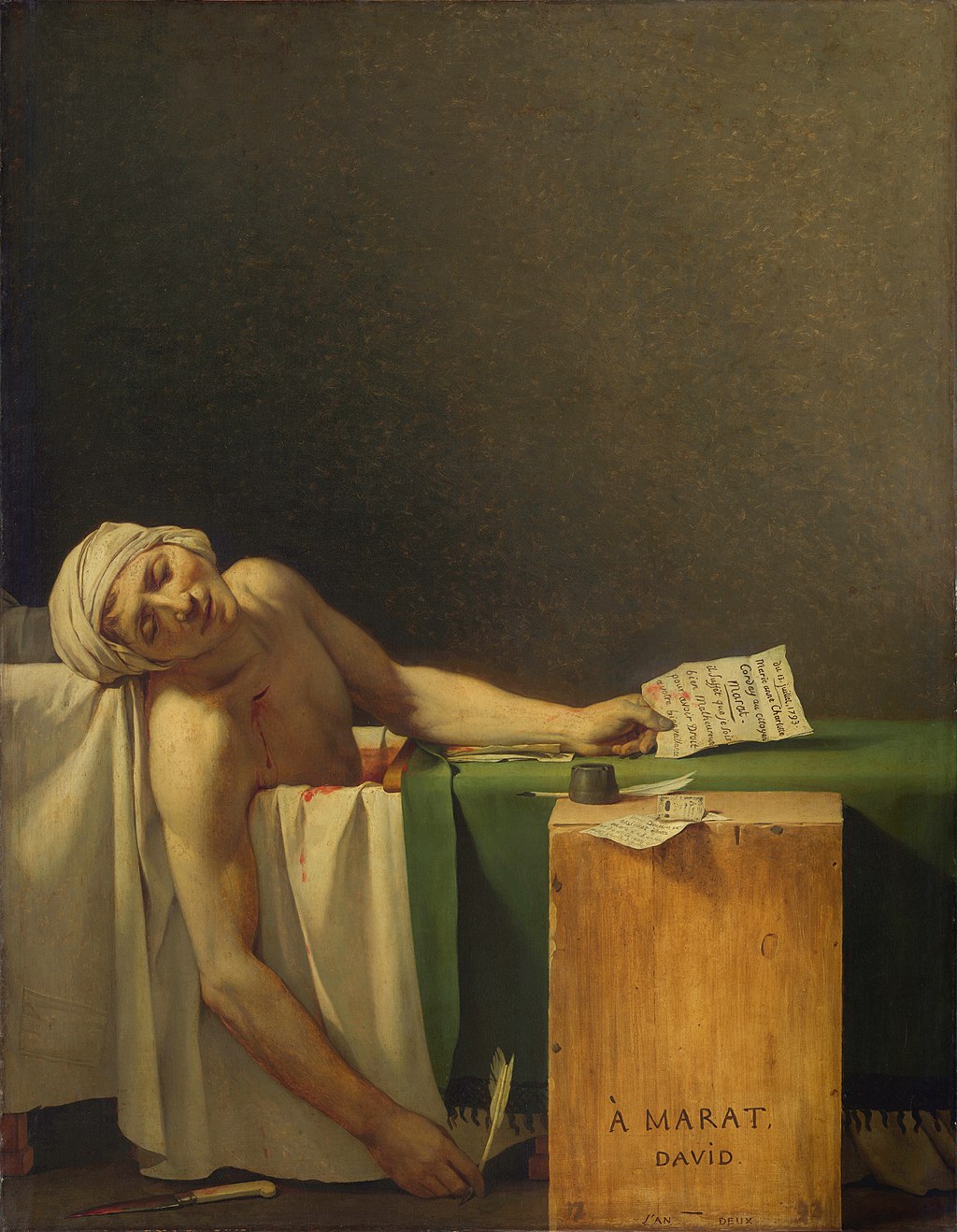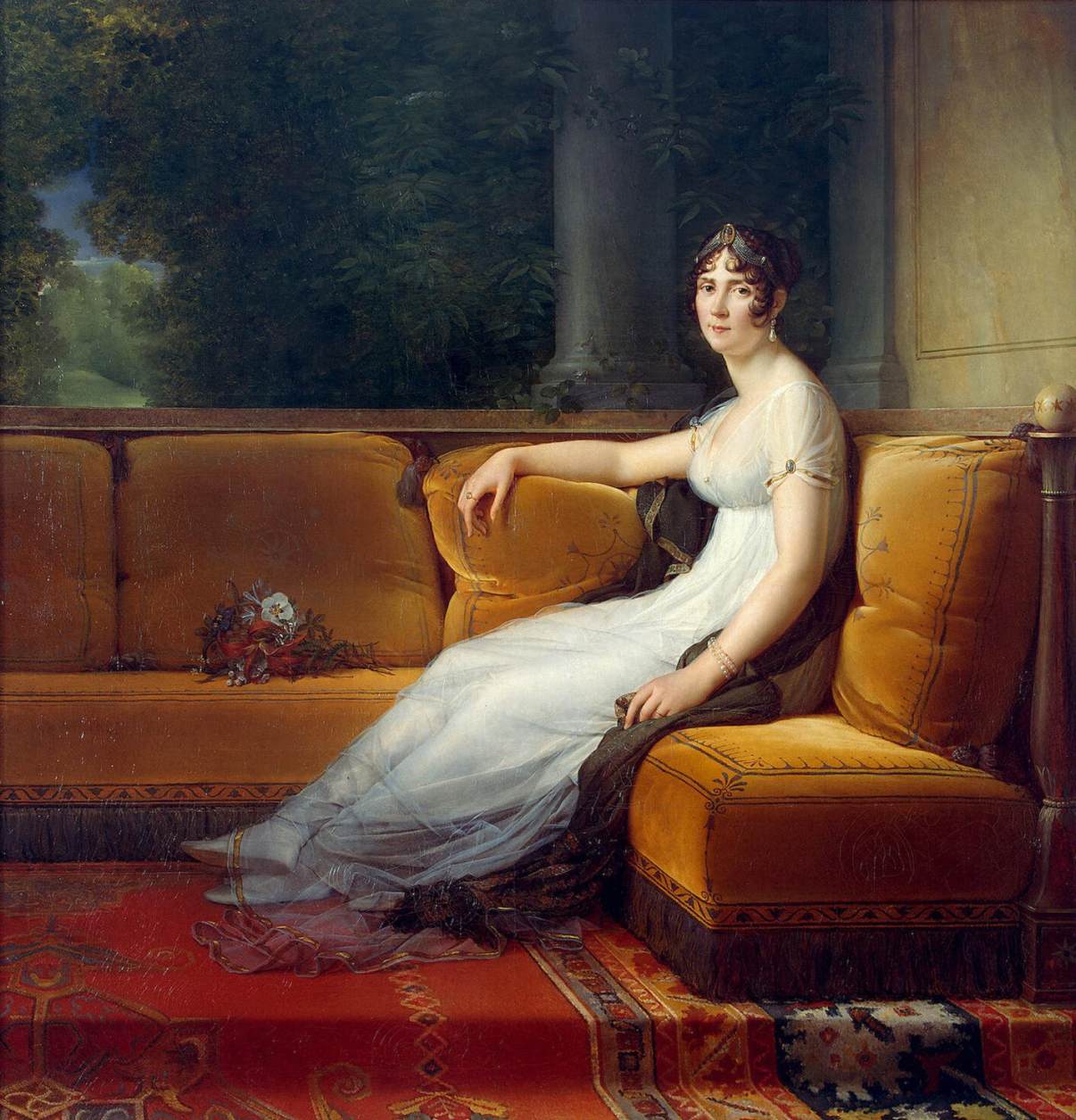Charlotte Corday by Paul-Jacques-Amié Baudry
Hello! This week we will be discussing this painting by Baudry.

No doubt, if you're viewing this website you are familiar with Charlotte Corday and her assassination of Marat. The Death of Marat by Jacques-Louis David is one of the most well known paintings from the French Revolution! What makes this piece different however, is that it is some seventy years after the peak of the Revolution. Still, you can absolutely see some inspiration from the David depiction of Marat's death.
If we examine Corday, we can see that she appears unsure of herself, even nervous. This seems a little out of character for her, but you can also tell that her eyes are focused out, beyond the room and Marat. This may be the moment in which Simonne Evrard, Marat's fiancée, came into the room following Marat's death shout. Following this, officials came to arrest Corday and to hold back the Montagnard lynch mob that had come to get Corday. The depiction of Corday shown here is even more accurate than her the portrait she got hours before her death. Corday here is depicted with her proper dark brown hair, although is missing the new hat she had bought earlier in the day. I am not sure whether or not the dress is accurate to the date of the execution, but I have seen her depicted in a similar dress in other works.


As is seen above, the posing for Marat is almost exactly the same. The pose originates from Michelangelo's Pieta, so David's original intent was to depict Marat as a Christ-like figure. I've always found that part a little confusing, as there was a big seperate church-from-state movement going on during the Revolution, and glorifying anyone as an almost religious martyr seems excessive and unlike something the revolutionaries would want to associate with. Despite all that, it's a very effective pose. Another detail that makes him into this Christ-like martyr is the wound he is depicted with. In the David piece, the knife has fallen out and lays on the ground, whereas in the Baudry piece the knife stands upright, the murder clearly having just happened.
That's the big difference between these two pieces: The exact moment depicted. Baudry depicts the moment directly after the murder, Corday hanging back, ensuring her plan worked. Meanwhile David stages the death later, after Corday's arrest. I'd argue that it may even be nighttime when he is finally getting around to depicting Marat. Corday had killed him in the evening, and David may have not gotten around to painting him until it was even darker.

